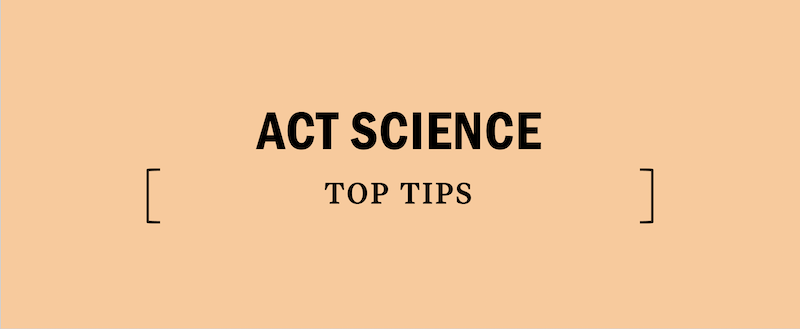ACT Science: Research Summaries
The third and final type of ACT Science passage you will see on test day is research summaries. The Research Summaries format on the ACT Science is all about experiments. If you’ve taken Biology, Chemistry or Physics, you already have a strong understanding of what experiments are and how they are set up. For Research Summaries you will be presented with one or more experiments and will be required to understand, evaluate and interpret the design, execution and results of each. You will know you have a Research Summaries passage when you see labels like “Experiment 1” and “Experiment 2.”
The results of these experiments are often displayed in graphs and tables- so you can use the same skills you’ve been practicing for Data Representation passages to help you analyze the results. Let’s focus on some specific tips for Research Summaries passages:
Identify the Purpose
This is usually found in the first few sentences of the passage or at the bottom of the first paragraph. It answers the question, why was this experiment conducted? Look for verbs, such as “to examine…” or “to explore….” Once you’ve located the Purpose, make sure to underline or circle it in case you need to refer back to it later on. Generally the Purpose is the same for both passages. If, however, it changes make sure to identify the new purpose for the second experiment and ask yourself how it differs from the first.
Identify the Method(s)
This answers the question, how was the experiment set up? The Method is more complicated than the Purpose and often involves many parts. Make sure to underline and circle the parts of the passage that explain the method. Take a moment to visualize the experiment in your mind. Do you understand how it is being set-up? Think about it for a few seconds until it makes sense to you. If you are confused, see if re-reading the Purpose clarifies it for you. When you come to the second experiment, the Method will often be altered slightly. Certain aspects of the first experiment will be the same, but others may have been changed. Make a note in the margin on Experiment 2 of what stayed the same and of what changed. It is very important to be able to tell the experiments apart.
Here is where all of your practice with Data Representation comes in handy (aren’t you glad you’ve been working so hard?)! Just like you would with a graph or a table in a Data Rep passage, make sure to determine what labels are on the axes, columns and rows and pay special attention to the units of measurement. Identify and label any trends in the data; look for direct and indirect variation. Finally, if there are separate results for each experiment compare them to each other. How are the results different? How are they the same?
There are two more Science vocabulary words that will help you understand these experiments: independent variables and dependent variables. You may already be familiar with these terms from your high school Science courses. If not, here’s a refresher. An independent variable is what is controlled by the scientists. It is something they change in the hopes that different results will occur. A dependent variable is what is being measured. It answers the question, what is being observed?
For example, let’s say a scientist set up an experiment to show the effect of heat on ice cream melting. Dr. Scientist put a bowl of ice cream in a microwave and then heated it up at various temperatures and measured the amount that had melted. Heat would be the independent variable since it was regulated by Dr. Scientist. The amount melted was the dependent variable because Dr. Scientist had no control over it. He simple measured it.
The most important thing to remember in Research Summaries passages is to keep the experiments straight in your head. Make sure to carefully identify the Purpose, Method and Results of each. Before you begin answering questions, consider the two experiments: what was similar? What was different? Just like Data Representation passages, the idea is to get yourself thinking critically before you look at the questions!

